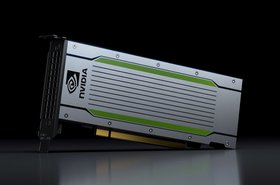Since its invention in 1987, NAND flash has transformed the way organizations store and use data. The NAND flash memory market will grow to a value of $94.24 billion by 2027, estimates Mordor Intelligence, however more widespread adoption of solid-state drives (SSDs) is hindered by high acquisition costs. Organizations require the high performance of SSDs yet face stretched budgets and growing data volumes.
Innovations in NAND flash mean there are now less expensive and higher capacity options on the market, which go some way towards meeting industry demand to cut costs and increase capacity. Triple-level cell (TLC) SSDs, which store three bits of data per cell, and quad-level cell (QLC) SSDs, which store four bits of data per cell, are the two main flash media options available today. The lower cost of QLC has made flash more accessible and enabled organizations to deploy it in large-scale disaggregated infrastructures. However, despite the more attractive price point, QLC cannot offer the same reliability, endurance, and performance as more expensive TLC drives.
To achieve the best of both worlds, software solutions that intelligently manage the way data is written to SSDs maximizes capacity while improving the endurance, performance, and reliability of cheaper SSDs to match those of a more expensive flash device. This equates to a more palatable total cost of ownership (TCO) of flash, and as a result grows an organization’s margins.
Endurance
To extend the life expectancy of an SSD, it is important to understand endurance, i.e. the number of programme/erase (P/E) cycles that can be applied to a flash cell before it becomes unreliable. The oxide layer in the cell is degraded with each P/E cycle, and can result in leakage. Endurance is impacted by the way data is written to the device; SSDs prefer to receive large sequential writes rather than smaller blocks or random writes.
Typical application workloads create random writes, in different sizes and patterns, which causes SSDs to wear out more quickly. Unfortunately, even applications that have been programmed to produce the large sequential writes that SSDs prefer do not have the desired effect because when they are combined they are perceived by the SSD as a random write workload.
To address this, IT teams can place intelligent management software between the storage and the applications that arrange the writes so that the SSD only receives large sequential writes. This can increase the endurance of an SSD by up to twenty times.
Performance
The performance is also boosted by writing data to SSDs in this way. Large sequential writes can utilize five to 10 times more bandwidth than random writes, while also decreasing latency. Greater performance means that more applications can be served by the same hardware. An organization can therefore reduce the number of flash devices it acquires, improving its TCO.
Another element that must be considered is the consistency of performance. It does not matter how high the average performance is, it cannot meet the requirements of modern applications without consistent performance. The ability to guarantee tail latency is critical, as even one or two slow I/O responses could damage a financial trade or an online retail sale. Leveraging flash management software can ensure performance consistency.
Capacity
To further reduce the TCO of flash, capacity must be managed. Techniques such as compression and thin provisioning can ensure SSD capacity is utilized efficiently. To eliminate wasted space, flash management software compresses data and aggregates multiple writes to create a single large write request that is sent to the SSD.
Thin provisioning features can further improve capacity. When a data volume is provisioned to an application, a size must be specified although the volume may not reach capacity for a while. With thin provisioning, the physical capacity utiliszed from the system equates to the total data written, rather than what is provisioned.
Resilience
Failures happen. In large-scale deployments, IT teams must be prepared for hardware failures, especially since QLC drives tend to be less reliable than other SSDs. It is therefore critical to find a solution that is designed to manage failures without disruption to the organization.
Flash management software that offers self-healing features can avoid manual replacement of an SSD and significantly reduce costly downtime. This will provide access to data and ensure the system continues to run smoothly on other hardware, while it repairs the SSD behind the scenes.
So, to mitigate the high acquisition costs of flash and reduce TCO, IT teams deploying QLC NAND flash should consider solutions with intelligent management software that can improve the endurance, performance, capacity, and reliability of the storage device. In addition, it is worth considering a software-defined solution to help simplify supply chain challenges by providing a flexible choice of hardware. Leveraging flash management software will enable organizations and cloud service providers to more quickly provision storage to their customers and applications, maximize the capacity of lower-cost flash media, and minimize downtime.





